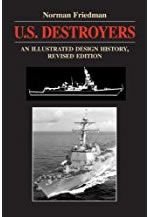|
|
USS Bruce (DD-329) was a Clemson class destroyer that served with the Pacific Fleet in 1921 then with the Scouting Fleet in the Atlantic as well as spending a year in European waters.
The Bruce was named after Frank Bruce, who was killed on 17 May 1919 when a mine that was part of the North Sea Mine Barrage exploded.
The Bruce was laid down by the Bethlehem Shipbuilding Corps at San Francisco and launched on 20 May 1920 when she was sponsored by Mrs. Annie Bruce, widow of Lieutenant Bruce and commissioned on 29 September 1920.
From September 1920 until November 1921 the Bruce served with Squadron 5 of the Pacific Fleet, based at San Diego, and took part in gunnery, torpedo and engineering exercises.
In November 1921 the Bruce was transferred to Division 27 of the Scouting Fleet, based at Boston. She took part in the regular life of the Atlantic Fleet, which involved summers along the US East Coast and winters in the Caribbean.
In May-June 1924 the Bruce, Putnam (DD-287) and Case (285) took part in torpedo practice in the Southern Drill Grounds, with the Bridgeport (Id. No. 3009) providing the umpires. In December 1924 she became the flagship of Destroyer Division 27.
In June 1925 her home port was changed from Boston to the Norfolk Navy Yard, to prepare her for duty with the US Naval Forces in European Waters. She departed for Europe on 17 June, and spent the next year overseas as the flagship of Destroyer Division 27, which then contained the Charles Ausburne (DD-294), Preston (DD-327), Coghlan (DD-326), Osborne (DD-295) and Lamson (DD-328).
On 16 January 1926 the Bruce collided with a tug just after emerging from a period in the dry dock at Toulon, and suffered damage to her stem that forced her back into the dry dock for more repairs.
On 3 April 1926 the ships of Destroyer Division 27 were photographed at Venice, when the division contained the Preston (DD-327), Lamson (DD-328), Coghlan (DD-326) and Bruce (DD-329).
In March 1927 she took part in Fleet Problem VII which took place in the Canal Zone and simulated an attack on the canal. She then took part in a fleet concentration on the Atlantic Coast, before carrying out training cruisers for naval reservists along the north-eastern coast.
On 11 June 1928 the Bruce suffered a boiler accident while at the Norfolk Navy Yard. Machinist’s Mate William R Huber was later awarded the Medal of Honor for rescuing Charles H. Bryan from a steam filled boiler room, suffering severe burns himself in the process. Despite his best efforts, Bryan was one of three men who died in the incident.
In April 1929 the destroyer Childs rammed and sank the schooner Ernest Mills. The Bruce was given the task of searching for three missing crew from the schooner, including her captain, but they were never found.
By now it was clear that the Bruce’ Yarrow boilers were badly worn. The US Navy decided to swap thirty four of the badly worn destroyers for almost fresh sister-ships that had been in the reserves for most of the 1920s. The Bruce was decommissioned at San Diego on Philadelphia, used for experimental strength tests, and then sold as scrap on August 1932, helping to fulfil the terms of the London Naval Treaty.
Commanders
Lt Commander Seymour E. Holliday: January 1922-
Displacement (standard) |
1,190t |
Displacement (loaded) |
1,308t |
Top Speed |
35kts |
Engine |
2-shaft Westinghouse geared turbines |
Range |
2,500nm at 20kts (design) |
Length |
314ft 4in |
Width |
30ft 10.5in |
Armaments |
Four 4in/ 50 guns |
Crew complement |
114 |
Launched |
20 May 1920 |
Commissioned |
29 September 1920 |
Sold as scrap |
August 1932 |
 U.S. Destroyers: An Illustrated Design History, Norman Friedmann .
The standard history of the development of American destroyers, from the earliest torpedo boat destroyers to the post-war fleet, and covering the massive classes of destroyers built for both World Wars. Gives the reader a good understanding of the debates that surrounded each class of destroyer and led to their individual features.
U.S. Destroyers: An Illustrated Design History, Norman Friedmann .
The standard history of the development of American destroyers, from the earliest torpedo boat destroyers to the post-war fleet, and covering the massive classes of destroyers built for both World Wars. Gives the reader a good understanding of the debates that surrounded each class of destroyer and led to their individual features.